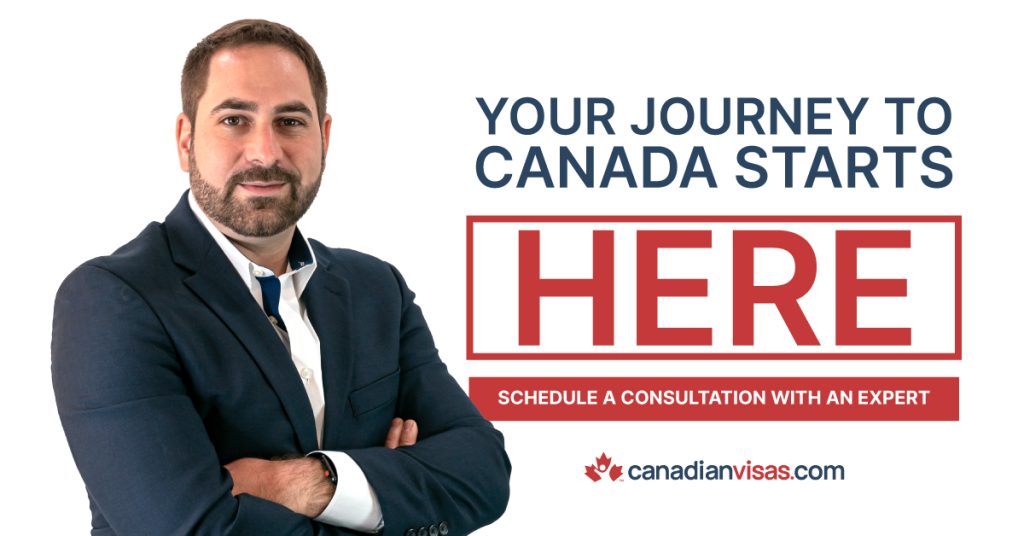
Apr 24, 2024 | Business Immigration, Canadian Experience Class, Citizenship, Complete Representation, Federal Skilled Trades, Humanitarian & Compassionate, Permanent Residency, Processing Times
The National Occupational Classification (NOC) is a standardized system used to classify and categorize occupations in Canada. This system is used for various purposes, including immigration, labor market research, and wage reporting. For immigrants to Canada, the NOC is an essential tool for understanding their eligibility for certain immigration programs and for finding work in their field.
What is the NOC?
The NOC is a five-tiered hierarchical structure that classifies occupations based on their skill level, education, training, and experience requirements. There are 10 broad occupational categories, 45 major groups, 89 minor groups, 162 minor groups, and 516 unit groups. Each unit group is assigned a unique four-digit NOC code.
How is the NOC used for immigration?
The NOC is used by Immigration, Refugees and Citizenship Canada (IRCC) to assess the eligibility of applicants for certain immigration programs, such as the Express Entry system. The NOC code of an applicant’s occupation is one of the factors that is used to calculate their Comprehensive Ranking System (CRS) score. A higher CRS score means that an applicant is more likely to be invited to apply for permanent residency.
How can I find my NOC code?
There are a few ways to find your NOC code. You can search for it by job title using the NOC website: https://www.canada.ca/en/immigration-refugees-citizenship/services/immigrate-canada/express-entry/eligibility/find-national-occupation-code.html, or you can browse the NOC structure by occupational category. You can also find your NOC code in job postings.
What are some tips for using the NOC for immigration?
- Make sure you are using the correct NOC code. The NOC was updated in 2021, so make sure you are using the most recent version of the code.
- Choose a NOC code that is closely related to your occupation. If you are not sure which NOC code to choose, you can contact an immigration consultant or job counselor.
- Be prepared to provide evidence of your work experience. When you apply for an immigration program, you will be asked to provide evidence of your work experience. This may include job letters, transcripts, and references.
The Most Common NOC Classifications for Immigrants to Canada
The following table shows the most common NOC classifications for immigrants to Canada in 2021:
Please note that this is just a small sample of the many NOC classifications that are relevant to immigrants to Canada. The best way to find the NOC code that is right for you is to search the NOC website or to contact an immigration consultant.

Additional tips for using the NOC for immigration
- Consider your skills and experience. When choosing a NOC code, it is important to consider your skills and experience. What are you good at? What experience do you have? Choose a NOC code that is a good match for your skills and experience.
- Research the job market. Once you have chosen a NOC code, it is important to research the job market for that occupation. Is there a demand for workers in that occupation? What are the average salaries for that occupation?
- Be prepared to adapt. The Canadian job market is different from the job market in many other countries. Be prepared to adapt your skills and experience to meet the needs of the Canadian workforce.
Conclusion
By understanding the NOC and how it is used for immigration, you can increase your chances of successfully immigrating to Canada and finding work in your field.

Mar 12, 2024 | Business Immigration, Canadian Experience Class, Citizenship, Complete Representation, Federal Skilled Trades, Humanitarian & Compassionate, Permanent Residency, Processing Times
Invitation to Apply for Permanent Residence Canada (ITA)
If you are interested in becoming a Permanent Resident of Canada, you will need to be invited through an Invitation to Apply (ITA). This ITA is a document issued by Immigration, Refugees and Citizenship Canada (IRCC). After receiving an ITA, applicants will have the chance to apply for Canadian permanent residence and bring their accompanying family members, such as their spouse or common-law partner and any dependent children, along with them.
Step-by-step process of getting an Invitation to Apply (ITA) to immigrate to Canada:
1. Create an Express Entry profile to enter the Express Entry pool.
The first step involves submitting information about your skills, language ability, education, and work experience. If you meet the criteria for immigration to Canada, you will be placed in the Express Entry pool.
2. Receive a Comprehensive Ranking System score.
You will then be given a Comprehensive Ranking System (CRS) score based on the information in your Express Entry profile. The CRS score is used to rank candidates based on their skills and other factors.
3. Boost Your CRS Score
The Comprehensive Ranking System (CRS) assigns points based on your human capital factors like skills, education, age, language proficiency, and work experience. A higher score increases your chances of receiving an ITA. Consider these strategies:
- Improve Language Skills: Aim for high scores on English or French language tests like IELTS or CELPIP. Strong language abilities are essential for integrating into Canadian society and the workforce.
- Gain Work Experience: Relevant Canadian or international experience boosts your score. Look for opportunities in fields listed in Canada’s National Occupational Classification (NOC) for additional points.
- Pursue Higher Education: A Canadian degree, diploma, or relevant post-secondary qualification can be advantageous. Consider Canadian institutions or programs approved by Canadian education credential assessment services.
- Secure a Valid Job Offer: A job offer from a Canadian employer with LMIA (Labour Market Impact Assessment) approval adds significant points and demonstrates your employability in Canada.
- Provincial Nomination: Receiving a nomination from a Canadian province/territory can significantly increase your CRS score. PNPs target skilled workers to address specific labor market needs. Research programs offered by provinces that align with your skills and experience.
4. Receive an Invitation to Apply (ITA) if your score is above the cut-off threshold score.
IRCC regularly conducts draws inviting candidates with the highest CRS scores to apply for permanent residence. The cut-off score for each draw varies depending on the number of applications received by IRCC.
If your CRS score is higher than the cut-off threshold score for that specific Express Entry draw, you will receive an ITA.
5. Submit a complete application for permanent residence (APR) in your online account.
Once you receive an ITA, you will have 60 days to submit a complete application for permanent residence (APR) in your online account. This involves providing documents such as passport, language test scores, job offer letter, and more.
Read more about: GCKey: Apply Online For Canada Immigration and Visa
6. Receive a Confirmation of Permanent Residence (COPR) and/or a Permanent Residence Visa.
After your application is approved, you will receive a Confirmation of Permanent Residence (COPR) and/or a Permanent Residence Visa.
7. Live and work in Canada as a Permanent Resident.
Finally, once you have your permanent residence visa, you can travel to Canada and live and work as a Permanent Resident.

National Occupational Classification (NOC) and Express Entry
The NOC is a system used by the Canadian government to categorize jobs based on skill level, type of work performed, and educational requirements. When creating your Express Entry profile, you’ll need to identify the NOC code that best reflects your primary work experience. Occupations in higher NOC skill levels (typically NOC 0, A or B under NOC 2016 or TEER levels 3, 4 or 5 under NOC 2021) are generally eligible for Express Entry.
Here’s how the NOC can influence your Express Entry profile:
- Eligibility: Choosing the correct NOC code ensures your work experience aligns with eligible occupations for Express Entry.
- CRS Points: Certain NOC codes may award more points under the CRS compared to others. Jobs requiring higher skill levels or those in high demand by Canadian employers tend to receive more points.
Research the NOC carefully and choose the code that most accurately reflects your main work duties. A mismatch can affect your eligibility or CRS score. You can find the NOC list and descriptions on the Employment and Social Development Canada website: Find your National Occupation Classification (NOC).
What Should You Do After You Receive an ITA
If you have received an Invitation to Apply (ITA), you have only 60 days to put together and submit all of your required supporting documents. To ensure that you’re ready to apply and make the most of the two-month period, it is important to begin collecting and organizing the necessary documents ahead of time.
In case you are unable to submit your application within the 60-day period, you will have the option to re-enter the Express Entry pool and start the process over.
How to Get an Invitation to Apply for Permanent Residence
To receive an ITA, you must first be eligible to immigrate by meeting the minimum requirements for the Express Entry pool. The Comprehensive Ranking System (CRS) score is used to assess a candidate’s eligibility.
The CRS score ranks an individual based on:
- Skills
- Education
- Language ability
- Work experience,
- and other factors.
Invitations to apply (ITA) will be given to those with a minimum CRS score or higher of that specific Express Entry draw.
Read more about: Changes in Express Entry in 2023
Documents you will need to apply for Permanent Residency
You will need the following documents to apply for a Canadian Permanent Residence:
- Passport
- Language Test score results
- Birth Certificate
- Work experience documentation
- Police Verification report
- Upfront medical receipt
- Medical report
PNP programs may require additional documents, including:
- Education Credential Assessment (ECA)
- Proof of Funds
- Offer letter from a Canadian employer
- Provincial Nomination Certificate or territorial certificate of nomination
- Marriage certificates or divorce certificates (if applicable)
- Your Personal reference code
- Express Entry Profile Number
- Job seeker validation code
- Letter of recommendation from previous employers.
Not Getting an ITA?
If you don’t receive an ITA in this round, don’t be discouraged. Consider these options:
- Re-entering the Express Entry pool: Keep your profile updated and look for ways to improve your CRS score. Aim to gain more work experience, improve your language proficiency, or pursue further education.
- Exploring Provincial Nominee Programs (PNPs): Research targeted provincial nominations that align with your skills and experience. These programs can boost your CRS score and provide a direct path to permanent residence in a specific Canadian province.
We Can Help You Determine Your Eligibility! Talk to an adviser today! (Click here)
(more…)

Jul 7, 2014 | Humanitarian & Compassionate
On July 4, the Federal Court of Canada ruled the government’s cuts to health care coverage for refugee claimants constitute “cruel and unusual” treatment and should be struck down.
The case was brought forward by the Canadian Association of Refugee Lawyers, Justice for Children and Youth and the Canadian Doctors for Refugee Care when the government created a two tiered system for refugees in 2012.
Two years ago, Ottawa trimmed medical benefits for newcomers, leaving most immigrants with basic health care but without supplementals such as vision and dental care. However, rejected refugee claimants, and refugee claimants from countries the government considers safe, would be eligible for care only when they pose a threat to public health.
Government lawyers argued the rules bring health benefits for newcomers in line with what other Canadians receive and deter those who would abuse the health care system. They argued refugee claimants can still access health care through other programs, such as those put in place by some provinces to reinstate access to essential and emergency care.

In her decision, Justice Anne Mactavish wrote: “With the 2012 changes to the Interim Federal Health Program, the executive branch of the Canadian government has intentionally set out to make the lives of these disadvantaged individuals even more difficult than they already are in an effort to force those who have sought the protection of this country to leave Canada more quickly, and to deter others from coming here.”
According to Justice Mactavish, the government has painted a bad picture of refugees: “The limits on refugee health care demean and endanger those from countries the government deems safe. It puts their lives at risk, and perpetuates the stereotypical view that they are cheats, that their refugee claims are ‘bogus,’ and that they have come to Canada to abuse the generosity of Canadians. It undermines their dignity and serves to perpetuate the disadvantage suffered by members of an admittedly vulnerable, poor and disadvantaged group.”
James Clancy, National President of the National Union of Public and General Employees, was pleased with the ruling. “People have come to Canada to seek refuge, and the Conservative government treats them like criminals. Taking away critical health care is ensuring children and families are destined for pain and poverty. It speaks to the true nature of this government that they think this is something Canadians would accept. We don’t, and thankfully, our courts won’t either.”
The government has been given four months to make changes to reinstate health care coverage to pre-2012 levels.
Immigration Minister Chris Alexander has promised to appeal the ruling. He contested the facts of the case, claiming refugees would be receiving better treatment than Canadians receive and suggesting refugee health care costs are too high.
Lorne Waldman, lead counsel on the case and president of the Canadian Association of Refugee Lawyers said, “With the decision, the Federal Court has recognized that the government’s cuts to refugee health care violate the fundamental rights enshrined in the Charter of Rights and Freedoms, without any lawful justification.”





 Useful Resources for Canada
Useful Resources for Canada
 Useful Resources for U.S.
Useful Resources for U.S.
 Our Local Immigration Services
Our Local Immigration Services